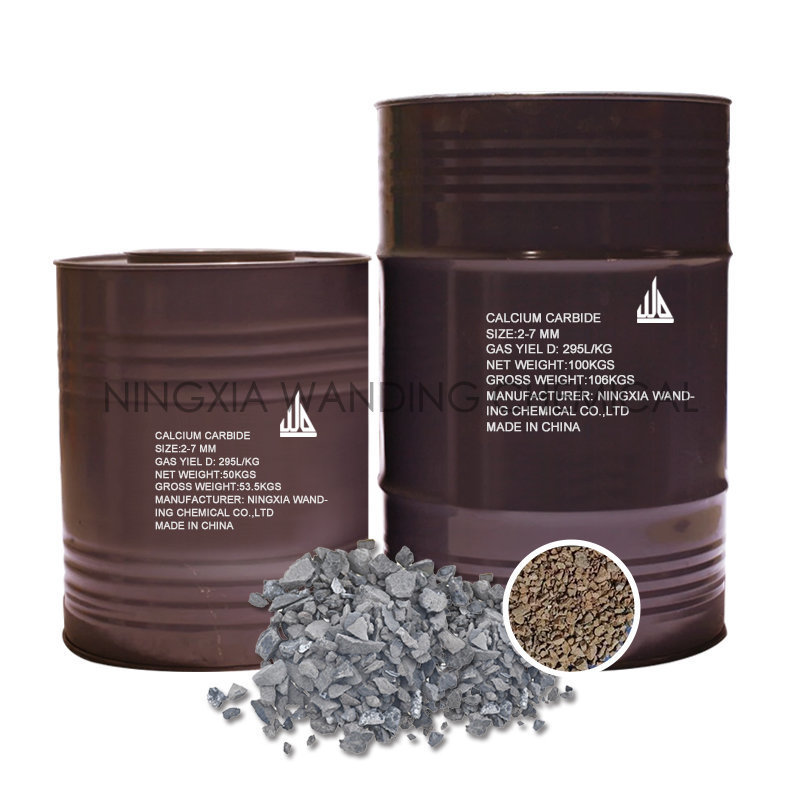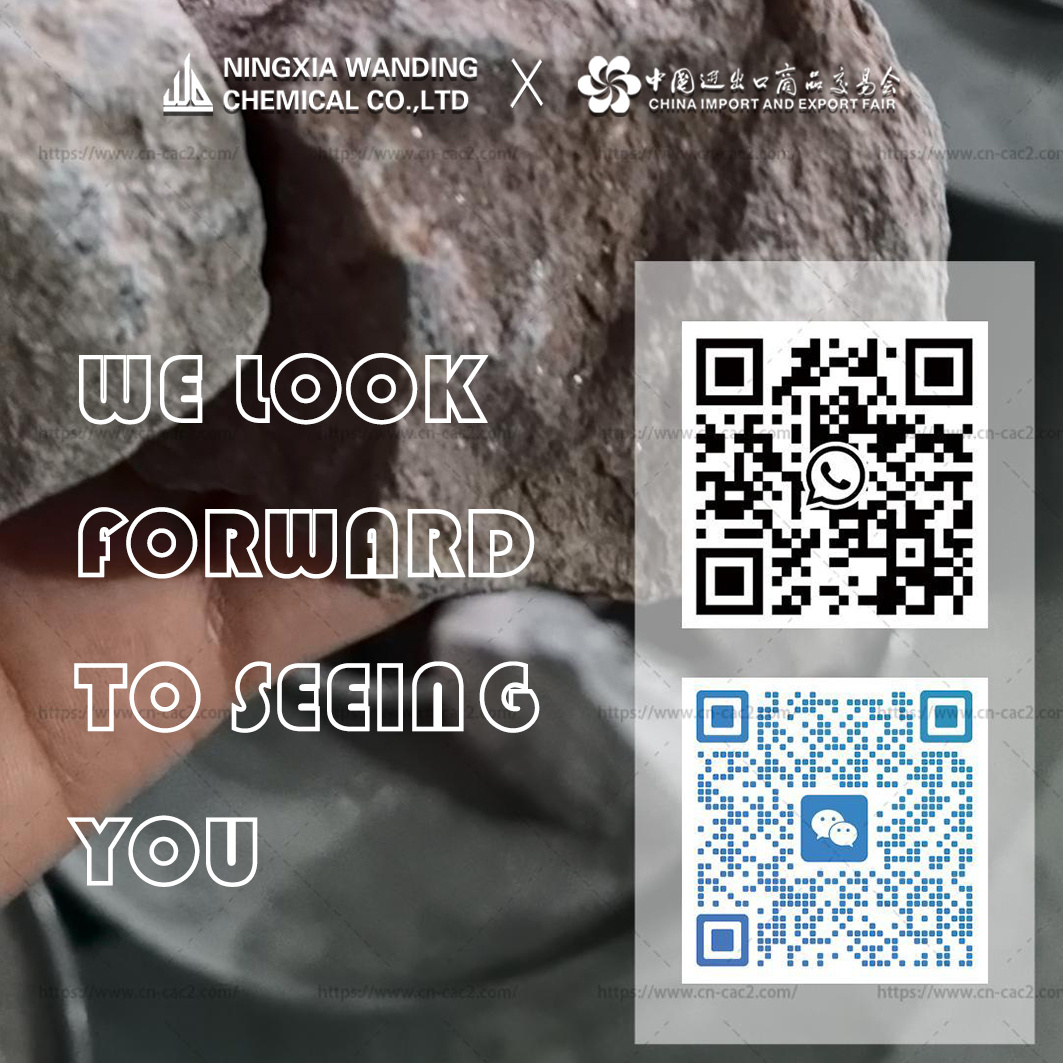Revolutionizing the Non-Ferrous Metal Industry with Calcium Carbide: A Game Changer for Sustainable Production
Release Time:
2025-02-01
Revolutionizing the Non-Ferrous Metal Industry with Calcium Carbide Table of Contents 1. Introduction to the Non-Ferrous Metal Industry 2. What is Calcium Carbide and Its Role? 3. The Significance of Calcium Carbide in Non-Ferrous Metal Production 3.1 Enhancing Production Efficiency 3.2 Reducing Environmental Impact 4. Key Applications of Calcium Carbide in the Industry 4.1 Production of Acetylene
Revolutionizing the Non-Ferrous Metal Industry with Calcium Carbide
Table of Contents
1. Introduction to the Non-Ferrous Metal Industry
2. What is Calcium Carbide and Its Role?
3. The Significance of Calcium Carbide in Non-Ferrous Metal Production
3.1 Enhancing Production Efficiency
3.2 Reducing Environmental Impact
4. Key Applications of Calcium Carbide in the Industry
4.1 Production of Acetylene
4.2 Calcium Carbide in Metallurgical Processes
4.3 Calcium Carbide as a Desulfurization Agent
5. Benefits of Using Calcium Carbide in the Non-Ferrous Metal Industry
5.1 Cost-Effectiveness
5.2 Improved Product Quality
6. Challenges and Solutions in Utilizing Calcium Carbide
6.1 Safety Concerns
6.2 Regulatory Compliance
7. Future Prospects of Calcium Carbide in the Non-Ferrous Metal Sector
8. Conclusion
9. FAQs
1. Introduction to the Non-Ferrous Metal Industry
The non-ferrous metal industry plays a crucial role in today’s economy, providing essential materials for various sectors including construction, electronics, and automotive. This broad category encompasses metals that do not contain significant amounts of iron, such as aluminum, copper, lead, nickel, and zinc. Non-ferrous metals are prized for their unique properties, including resistance to corrosion, high conductivity, and lightweight characteristics.
As industries evolve, the demand for innovative materials and processes has led to the exploration of unconventional substances. One such game-changer is **calcium carbide**, a compound that is revolutionizing the way non-ferrous metals are produced and utilized.
2. What is Calcium Carbide and Its Role?
Calcium carbide (CaC2) is a chemical compound composed of calcium and carbon. It is primarily produced by heating limestone and coke in an electric arc furnace. This process yields a product that is not only versatile but also a vital ingredient in several industrial applications.
In the context of the non-ferrous metal industry, calcium carbide serves various functions, from acting as a reducing agent to enhancing production processes. Its properties make it an indispensable material for achieving higher efficiency and sustainability.
3. The Significance of Calcium Carbide in Non-Ferrous Metal Production
Calcium carbide is making significant strides in non-ferrous metal production. Here are two critical ways it contributes:
3.1 Enhancing Production Efficiency
The use of calcium carbide in metallurgical processes often leads to improved efficiency. By serving as a reducing agent, it facilitates the extraction of metals from their ores, allowing for quicker and more effective processing. This efficiency translates into reduced time and energy costs, ultimately benefiting manufacturers and consumers alike.
3.2 Reducing Environmental Impact
With growing concerns about environmental sustainability, industries are under pressure to minimize their ecological footprint. Calcium carbide plays a pivotal role in this endeavor. Its use in metal production processes can lead to lower emissions of harmful gases, making it a more environmentally friendly option compared to traditional methods.
4. Key Applications of Calcium Carbide in the Industry
Calcium carbide has a wide range of applications within the non-ferrous metal sector, each with its own unique benefits.
4.1 Production of Acetylene
One of the most significant applications of calcium carbide is in the production of acetylene, a key component in welding and cutting processes. When calcium carbide reacts with water, it produces acetylene gas, which is used extensively in metalworking and chemical synthesis. This reaction not only highlights the versatility of calcium carbide but also underlines its importance in the overall metal processing industry.
4.2 Calcium Carbide in Metallurgical Processes
Beyond acetylene production, calcium carbide is integral to various metallurgical processes. It is often used to enhance the quality of metal by refining it during smelting. The addition of calcium carbide helps to remove impurities and improve the overall properties of the final product, ensuring that the metals meet industry standards.
4.3 Calcium Carbide as a Desulfurization Agent
In non-ferrous metallurgy, sulfur can adversely affect the quality of metal. Calcium carbide acts as an effective desulfurization agent, helping to reduce sulfur content in alloys. This is particularly important for producing high-quality metals that require minimal impurities.
5. Benefits of Using Calcium Carbide in the Non-Ferrous Metal Industry
The benefits of incorporating calcium carbide into non-ferrous metal production are manifold.
5.1 Cost-Effectiveness
Utilizing calcium carbide can significantly lower production costs. By streamlining processes and improving yield, manufacturers can achieve higher profitability. The reduction in energy costs, as a result of increased efficiency, further enhances the economic viability of using calcium carbide.
5.2 Improved Product Quality
The introduction of calcium carbide into metallurgical processes leads to superior product quality. Its ability to refine metals and remove impurities ensures that the final output meets stringent quality standards. This advantage not only satisfies customer demands but also enhances the reputation of manufacturers in a competitive market.
6. Challenges and Solutions in Utilizing Calcium Carbide
While calcium carbide offers numerous benefits, its usage is not without challenges.
6.1 Safety Concerns
Calcium carbide can be hazardous if not handled properly. It reacts vigorously with water, releasing acetylene gas, which is flammable. Therefore, safety protocols must be firmly established to mitigate risks associated with its use. Training personnel and implementing strict safety measures can significantly reduce the likelihood of accidents.
6.2 Regulatory Compliance
Manufacturers must also navigate regulatory restrictions surrounding the use of calcium carbide. Compliance with environmental regulations and safety standards is essential to avoid legal repercussions. Staying informed about regulatory changes and proactively adapting processes can help companies maintain compliance.
7. Future Prospects of Calcium Carbide in the Non-Ferrous Metal Sector
As the demand for sustainable and efficient production methods grows, the future of calcium carbide in the non-ferrous metal industry appears promising. Innovations in technology and processing methods may further enhance its applications and benefits. Research into alternative uses of calcium carbide and its derivatives could expand its role, cementing its position as a cornerstone in non-ferrous metal production.
8. Conclusion
Calcium carbide is undeniably revolutionizing the non-ferrous metal industry. Its ability to enhance production efficiency, reduce environmental impact, and improve product quality makes it a vital component in modern metallurgical processes. As industries push towards greater sustainability and innovation, the applications and benefits of calcium carbide are set to grow, making it an element of significant interest for the future.
9. FAQs
What is calcium carbide used for in the non-ferrous metal industry?
Calcium carbide is primarily used as a reducing agent in the production of metals, as well as in the production of acetylene, which is essential for welding and cutting processes.
Is calcium carbide safe to use?
When handled properly, calcium carbide can be safe to use. However, it can react violently with water, so safety protocols are crucial to mitigate risks.
How does calcium carbide improve production efficiency?
Calcium carbide enhances production efficiency by facilitating quicker processing times and reducing energy consumption during metallurgical processes.
What are the environmental benefits of using calcium carbide?
Using calcium carbide can lead to lower emissions of harmful gases and a reduced ecological footprint compared to conventional metal production methods.
Can calcium carbide be used in all non-ferrous metal production processes?
While calcium carbide is beneficial in many processes, its application may vary depending on the specific metal and production method. It is essential to assess its suitability for each case.
News Hotspot


















